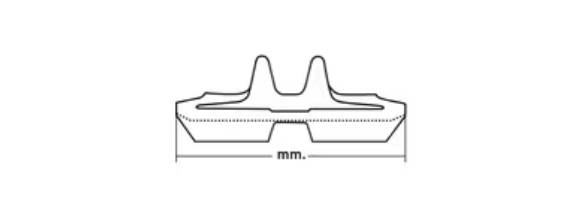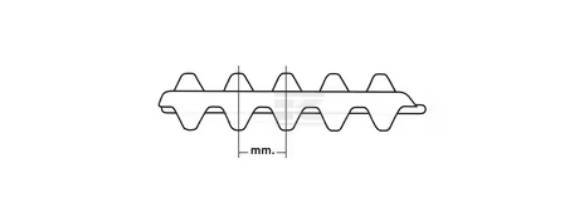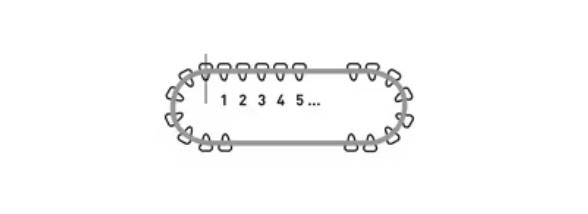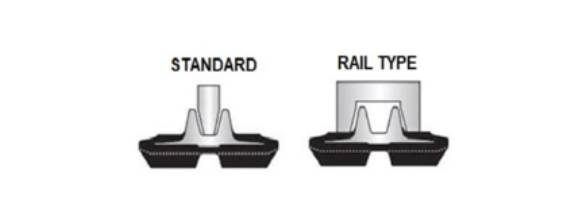This article explains how to select the right rubber tracks for different mini excavators.
You'll learn that:
- Choosing the correct track improves ride quality, traction, and fuel efficiency.
- It's important to know the old track's width, pitch, and number of teeth.
- There are five classification types often found in rubber track product numbers.
- It's a good idea to replace sprockets when replacing rubber tracks.
Why choosing the right rubber track matters
Selecting the appropriate rubber track greatly enhances a mini excavator's performance. Correctly fitted tracks lead to better ride quality, increased traction, reduced fuel consumption, and extended lifespan of your equipment. Using an incorrect track can lead to faster wear, costly breakdowns, and unnecessary downtime.
3 steps to identify the right rubber track
Follow these steps to ensure you choose the correct rubber track:
Step 1: Find your machine’s brand and model
Check the brand and model listed on your machine's nameplate. Then use the Kramp's Model Search tool to quickly find your machine and compatible tracks.
Step 2: Measure your rubber track correctly
But what if the mini excavator you're looking for isn't listed? Or perhaps the track size isn't stamped inside your existing track? Then you'll need to measure it manually:
Width: Measure the track width in millimeters.

Pitch: Measure from the center of one drive lug to the center of the next lug.

Links: Count the total number of teeth (or links) around the inner circumference of the track.

Knowing these measurements will help you narrow down your search for the best track.
Step 3: Understanding track classifications
Beyond basic measurements, rubber tracks have classifications found in their product ID numbers. These classifications vary by manufacturer and model type.
- “K” refers to a rail-type guidance system, where the tracks run on a reinforced rail surface instead of the links. This design ensures proper alignment and smooth movement. If the tracks lack a “K,” they use a standard guidance system.

- “Y” is exclusively for tracks compatible with Yanmar machines.
- “N” or “A” signifies narrow sprocket guidance.
- “W” or “B” signifies wide sprocket guidance.
- “Asymmetric” indicates tracks with offset links.
By understanding these letters, you're more likely to find a perfect fitting and performing rubber track.

A common mistake: sprockets and rollers
Not everyone knows this. But if it's time to replace a machine's rubber tracks, it's also wise to replace its sprockets.
Why? Because new tracks paired with old sprockets often fit poorly and wear faster than expected. Signs of worn sprockets include sharp or pointed teeth, uneven wear, and visible metal fatigue. Also, the upper or lower rollers might be worn, causing them to make unusual noises, show visible cracks, or spin irregularly.
It's also vital to check the condition of the final drive, check oil levels and change the oil when needed. Finally, proper track tension is crucial to prevent slipping or de-tracking (when the track runs off the machine).
How to choose between rubber track brands
Once you know what you are looking for, Kramp offers aftermarket rubber track options for many brands of mini excavators.
Kramp rubber tracks deliver dependable quality at a competitive price, ensuring strong performance without exceeding your budget.
We are here to help
If you're still choosing the right rubber track, contact a Kramp expert.
Otherwise, click below to start your search for rubber tracks by machine model.
